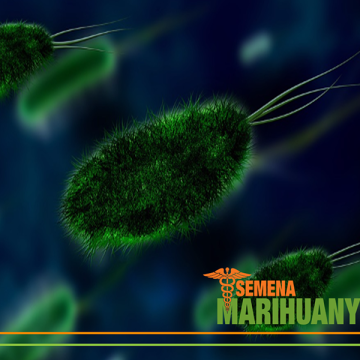Intestinal Microflora and Endocannabinoid System

- New research published over the past five years reveals important facts about the trillions of bacterial "companions" living in our intestines
- As hosts of these microbes, we share a unique symbiotic relationship with them
The so-called intestinal microflora of each of us is made up of about 100 trillion cells (which is 10 times the number of cells in the rest of the human body). In addition, there are about 160 different types of microbes in each of us, with the total number of types discovered so far around 1500. Some species of these microbes are found in the microflora base of most individuals, others are quite unique.
The overall composition of the human intestinal microflora is very relative - the resulting composition reflects factors such as geographical location of the individual, eating habits and last but not least, physical activity and overall lifestyle.
If the microflora needs to be adjusted, it is often recommended to use antibiotics (occurring in indigestible parts of the diet, such as fiber) in combination with probiotics (living microorganisms capable of enriching the intestinal microflora positively).
Studies to date have shown the ability of the intestinal microflora that affect a variety of physical and psychological functions of the human body that go far beyond mere digestion.
The condition of these microorganisms is closely related to other functions of the human body, such as:
- Immune system
- Inflammation control
- Defense against unwanted pathogens
- Metabolism of fats, proteins and carbohydrates
- Mental performance (unhealthy biom can lead to depression and anxiety)
"Unwanted fluctuations in the construction of intestinal microflora are the most common cause of disease development and health dysfunction."

Communication between endocannabinoid system and intestinal microflora
Currently, more and more data are emerging to confirm the interconnection of the intestinal microflora and the endocannabinoid system. (See the article " Introduction to the Endocannabinoid System ")
We already know from previous research that human endocannabinoids are most commonly produced in the body's bodies, which are responsible for the proper functioning of metabolism, energy balance and body weight (such as the brain, pancreas, adipose tissue and muscles).
Furthermore, we learned that endocannabinoids are responsible for :
- Gastric emptying
- Gastrointestinal motility (bowel motility)
- A feeling of satiety
- Apetitu
- Fat storage
- Sugar Reaction After Food
Among other things, the intestinal microflora is responsible for:
- Control energy usage by controlling fat storage in adipose tissue
- Regulation of insulin sensitivity
As you can see, the functions of the intestinal microflora and the endocannabinoid system are closely linked. For the first time, the association of these two systems was mentioned in a 2007 study where a reduction in abdominal pain was observed in experiments in mouse subjects after administration of probiotic Lactobacillus , resulting in increased production of intestinal endocannabinoids.
As such, obesity is often associated with a state of "stomach" , whereby the permeability of the stomach wall is increased and the unwanted bacterial components increasing inflammation of the entire digestive system are absorbed. Furthermore, increased gastric permeability leads to increased endocannabinoid production by the immune system and adipose tissue, which in turn accelerates fat cell division and growth (adipogenesis).
Function of the stomach wall and intestinal tractthe abandonment was also in focus in another study that showed a positive effect of administration of probiotic bacteria, resulting in increased production of certain types of cannabinoids while reducing the production of others. According to the researchers, these findings are a clear indication that the function of the intestinal microflora is closely linked to the endocannabinoid system, whereby the endocannabinoid function is either an increase or decrease in gastric wall permeability.
All these facts and findings further suggestshow that there is a link between the stomach, the intestines and the endocannabinoid system, or a mechanism that is similar to, for example, the axis between the intestines and the brain (eg, serotonin production - a hormone regulating good mood among others).
Thus, the order noexogenous cannabinoids (eg administration medicinal cannabis) to inflammatory bowel disease or to reduce the chances of developing diabetes.
Reference:
Cani PD, Plovier H, Van Hul M, Geurts L, Delzenne NM, Druart C, Everard A. Endocannabinoids - at the crossroads between gut microbiota and host metabolism. Nat Rev Endocrinol. 2015 Dec 18.
Geurts L, Everard A, Van Hul M, et al. Adipose tissue NAPE-PLD controls fat mass development by altering the browning process and gut microbiota. Nat Commun. 2015 Mar 11; 6: 6495.
Bajzer M, Olivieri M, MK Haas, Pfluger PT, et al. Cannabinoid receptor 1 (CB1) antagonisms glucose utilization and activates brown adipose tissue in diet-induced obese mice. Diabetologia. Dec 2011; 54 (12): 3121-31.
Rousseaux C, Thuru X, Gelot A, et al. Lactobacillus acidophilus modulates intestinal pain and induces opioid and cannabinoid receptors. Nat Med. 2007 Jan; 13 (1): 35-7.
Muccioli GG, Naslain D, Bäckhed F, et al. The endocannabinoid system links gut microbiota to adipogenesis. Mol Syst Biol. 2010 Jul; 6: 392.
